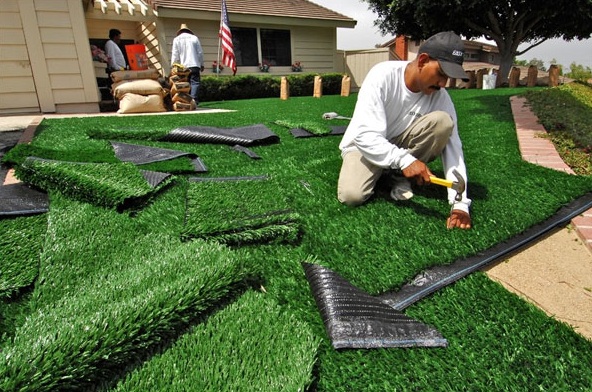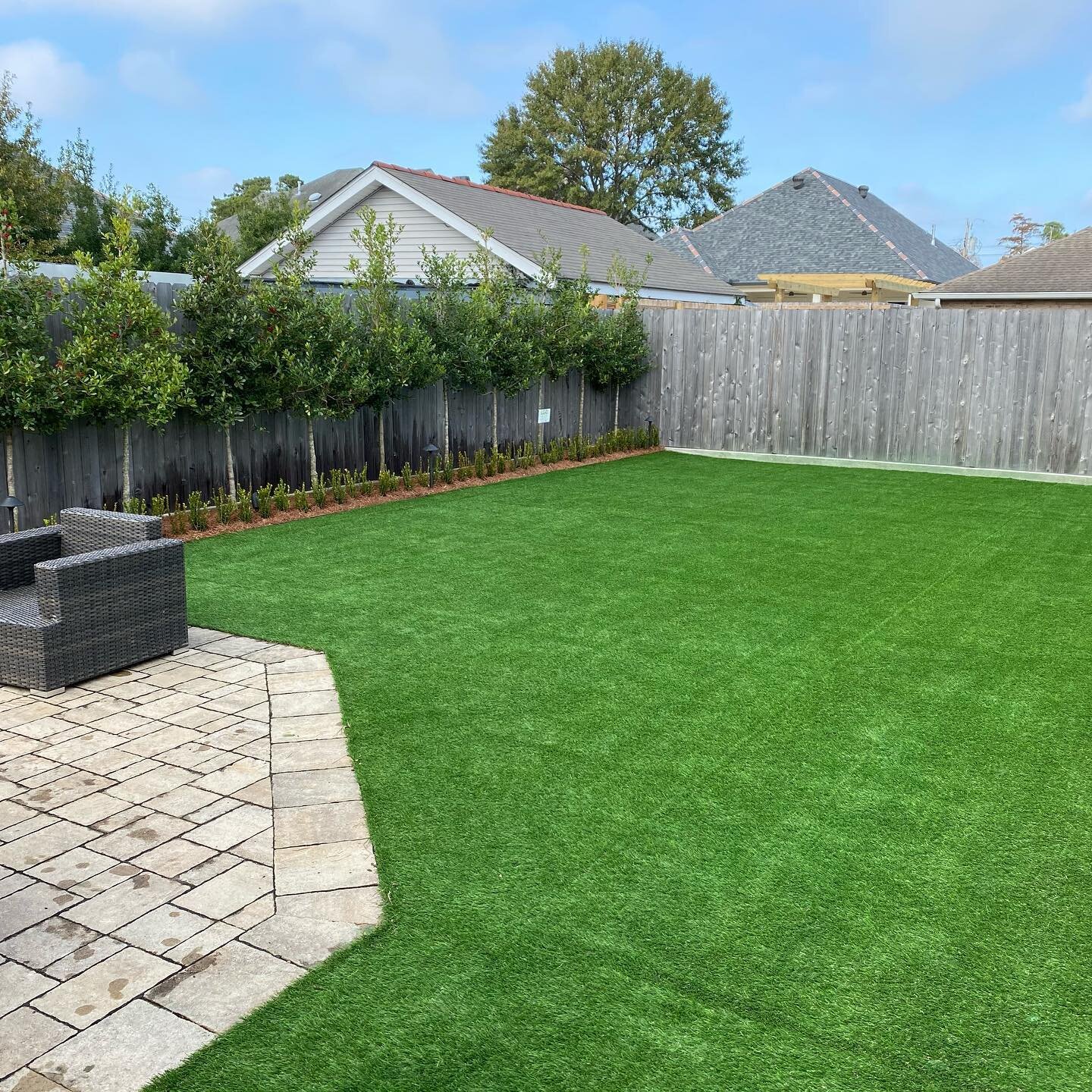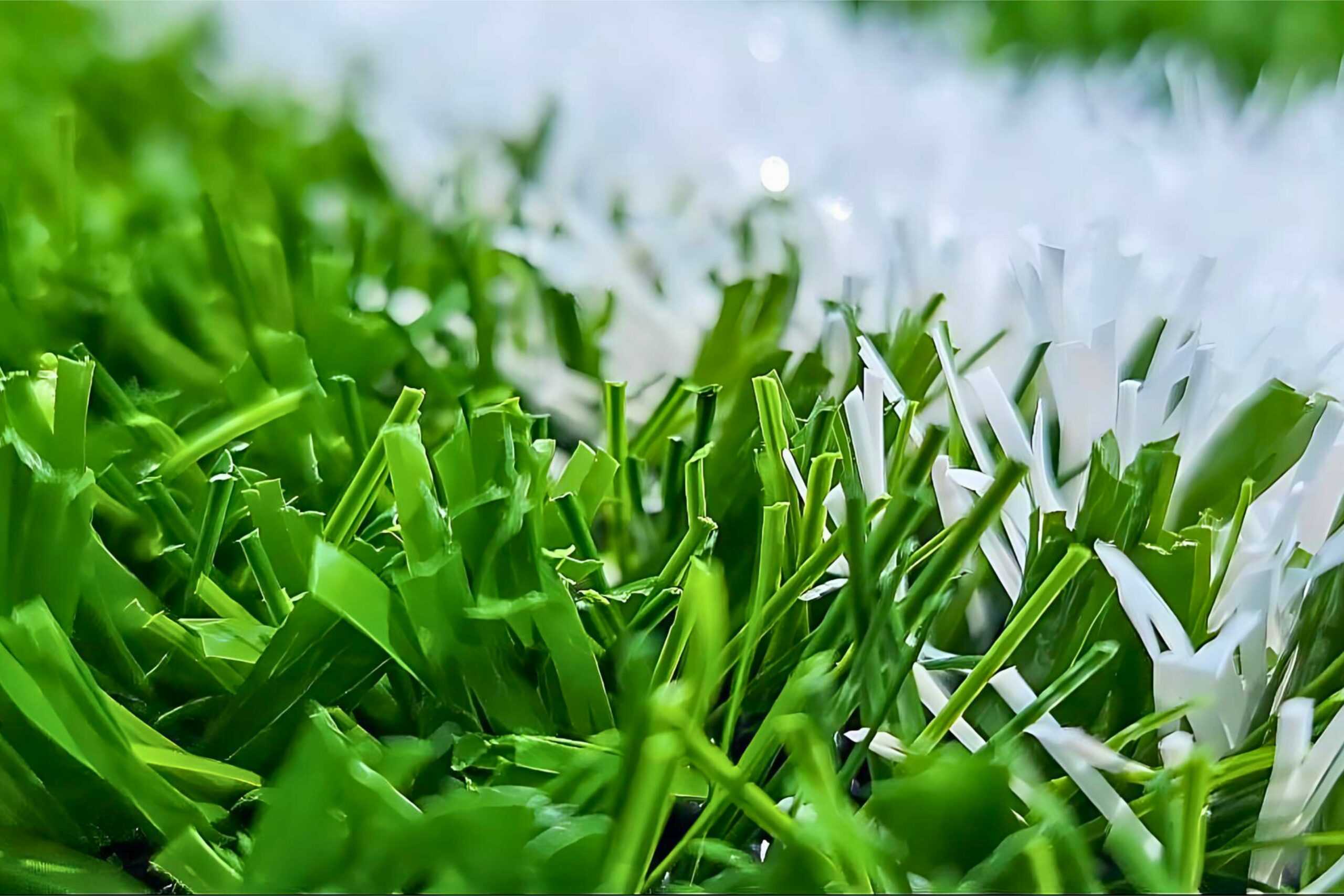Transform Your Yard with Reliable Turf Installation Phoenix AZ Solutions
Transform Your Yard with Reliable Turf Installation Phoenix AZ Solutions
Blog Article
Explore the Environmental Advantages of Opting for Synthetic Grass Solutions
The fostering of man-made turf options provides an engaging opportunity to attend to pressing environmental challenges. By substantially lowering water use and decreasing the application of damaging chemicals, these choices not just promote sustainable landscape design yet likewise secure neighborhood ecosystems.
Water Conservation Conveniences
One of the most substantial advantages of synthetic turf is its capacity to save water. In contrast, artificial lawn does not need watering, considerably reducing the total demand for water resources.
By getting rid of the demand for regular watering, man-made turf adds to lasting landscape methods and assists mitigate the environmental effect of too much water intake. The conservation of water extends to the reduction of drainage, which can lead to dirt disintegration and river air pollution.
Additionally, the setup of man-made grass permits homeowners and towns to assign water resources much more effectively, focusing on vital uses such as drinking water and agriculture. The shift in the direction of artificial lawn not just advertises accountable water usage but also straightens with more comprehensive ecological goals aimed at preserving natural deposits.
As neighborhoods significantly focus on sustainability, the water conservation benefits of artificial lawn provide a compelling case for its fostering in industrial and household landscape design jobs.
Reduced Chemical Use
The shift to synthetic grass dramatically reduces the reliance on chemical therapies typically used in all-natural turf upkeep. Conventional turf administration usually entails the application of fertilizers, pesticides, and herbicides to advertise growth and control parasites. These chemicals can present risks to human health and wellness, local wildlife, and the environment, contributing to dirt and water contamination.
In comparison, man-made lawn eliminates the need for these damaging materials. By decreasing the launch of artificial substances into the ecological community, artificial grass advertises much healthier dirt and water systems.
In addition, the absence of chemical runoff related to synthetic grass installations assists safeguard neighborhood waterways from pollution, supporting water life and keeping biodiversity. Arizona turf. As areas significantly focus on lasting methods, choosing for synthetic grass presents a viable remedy that straightens with environmental conservation goals. Via this change, property proprietors can appreciate rich green areas without compromising ecological wellness, leading the way for an extra sustainable future
Lower Carbon Impact

Additionally, the installment of synthetic grass can cause substantial water conservation. All-natural grass require significant quantities of water for irrigation, which not only contributes to the carbon impact associated with water extraction and treatment however additionally strains regional water resources. On the other hand, synthetic lawn requires minimal maintenance, calling for no watering, thereby substantially lowering water usage and its linked energy prices.
Furthermore, the longevity of synthetic grass adds to its decreased carbon effect. With a life-span of approximately 15 years or even more, the demand for constant substitutes is diminished, resulting in less waste and lower energy consumption in production and getting rid of typical grass choices. Overall, synthetic grass presents a lasting alternative for ecologically mindful landscape design.
Habitat Preservation
Habitat conservation is a critical factor to consider in the debate over landscape design selections, especially when comparing fabricated lawn to all-natural lawn. Natural yard yards frequently require extensive upkeep, including the use of fertilizers, chemicals, and herbicides, which can negatively impact neighborhood communities. These chemicals can seep into the dirt and waterways, harming indigenous flora and animals and disrupting regional habitats.
In comparison, synthetic grass provides an opportunity to minimize the ecological footprint of landscaping. By choosing artificial turf, house owners can reduce the disturbance of all-natural habitats connected with typical lawn treatment techniques. Synthetic grass gets rid of the demand for damaging chemicals, thereby securing neighboring wild animals and maintaining the stability of bordering ecological communities. Furthermore, the installment of synthetic grass can cause the conversion of previous yard locations into more biodiverse landscapes, such as pollinator gardens or native plant areas, which can support regional wildlife.
Ultimately, the change to synthetic grass not only saves water and decreases maintenance efforts yet likewise fosters an extra find out here unified connection in between human discover here activities and the natural surroundings, advertising environment preservation while doing so.
Long-Term Sustainability
Lasting sustainability is a critical consider examining the benefits of synthetic grass over typical yard lawns. Among one of the most significant advantages of synthetic grass is its toughness; it can last as much as 15-20 years with minimal upkeep, whereas all-natural yard needs frequent reseeding and substitute. This durability minimizes the requirement for constant resources, such as water, fertilizers, and pesticides, which are vital for keeping a healthy and balanced grass lawn.
In addition, synthetic grass adds to a decrease in carbon exhausts related to yard treatment devices. Standard lawns frequently call for gas-powered mowers, leaners, and blowers, every one of which add to air contamination. Phoenix turf companies. On the other hand, synthetic grass gets rid of the requirement for such tools, promoting a cleaner setting
Additionally, the manufacturing of artificial grass increasingly uses recycled materials, boosting its sustainability account. As suppliers adopt green methods, the environmental footprint of synthetic grass remains to lessen.

Final Thought
The adoption of synthetic grass remedies provides considerable ecological benefits, consisting of considerable water preservation, decreased reliance on damaging chemicals, and a reduced carbon impact. Moreover, synthetic grass help in protecting all-natural habitats by decreasing land disturbance and advertising lasting sustainability through making use of resilient materials. Collectively, these variables emphasize the possibility of synthetic grass to add positively to environmental health and wellness and provide a sensible choice to traditional landscape design methods in an increasingly resource-conscious globe.
In comparison, synthetic turf does not require watering, substantially decreasing the total need for Check Out Your URL water sources. By reducing the launch of synthetic substances right into the ecological community, artificial lawn promotes much healthier soil and water systems.
Moreover, the installation of man-made lawn can result in significant water conservation. In comparison, fabricated grass needs minimal maintenance, needing no watering, thereby considerably lowering water usage and its connected energy prices.

Report this page